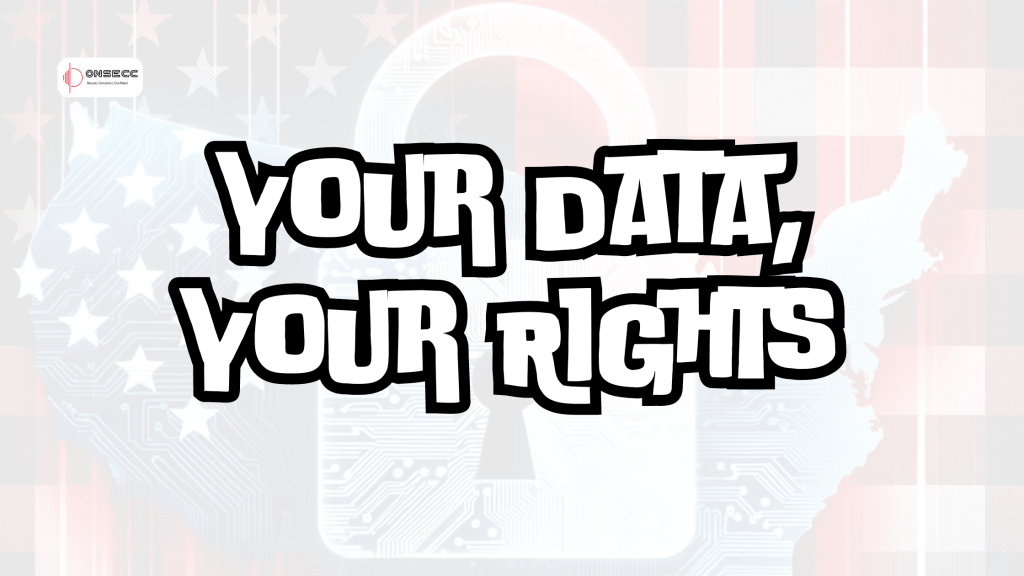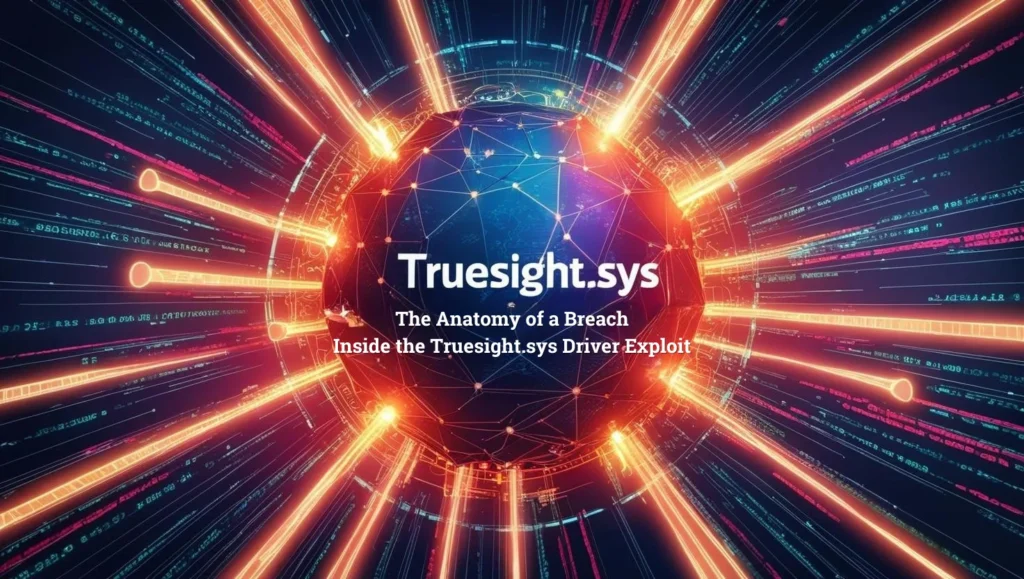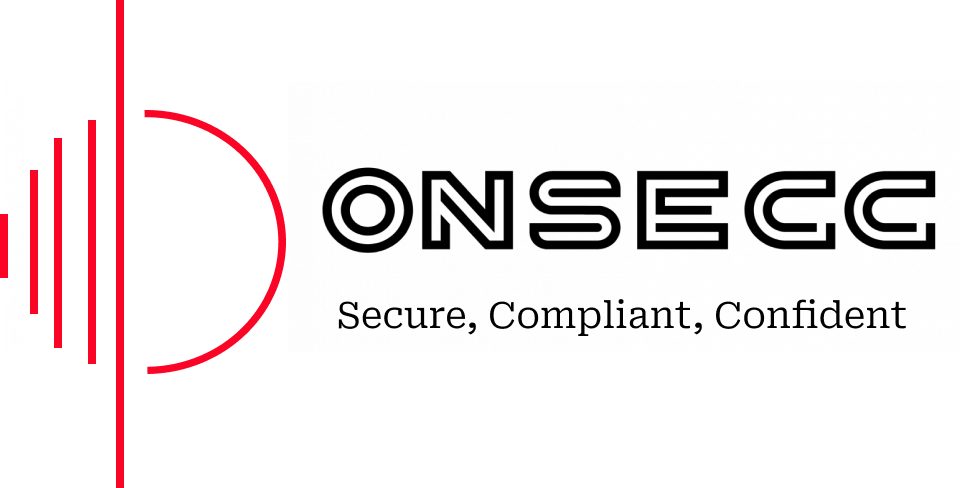Navigating the American Privacy Rights Act: Understanding the Impact on the Privacy Landscape
In an age where digital privacy is essential, the American Privacy Rights Act (APRA) is a crucial step in the evolution of U.S. privacy laws. This guide explores the APRA in detail, aiming to clarify its complexities and highlight its effects on individuals and businesses alike. Whether you’re a consumer seeking to understand your rights or a business navigating new regulations, this article provides key insights to help you adapt to the changing data privacy environment. Join us as we delve into the future of digital rights and see how this significant legislation is redefining American privacy standards.
Table of Contents:
- Introduction to the American Privacy Rights Act
- Key Components of the Act
- Implications for Businesses
- Consumer Perspectives and Privacy Concerns
- How Onsecc Can Assist with APRA Compliance and Understanding
- Future Outlook and Potential Amendments
- Conclusion

Introduction to the American Privacy Rights Act
Let’s do an Overview of the Act, the American Privacy Rights Act (APRA) is a proposed federal privacy law aimed at establishing a comprehensive privacy framework across the United States. This legislation seeks to harmonize the disjointed state privacy laws into a singular national standard, empowering individuals with greater control over their data. Historical Context of Privacy Rights Legislation is the call for a unified federal privacy law. That has gained momentum following the fragmentation caused by state-specific laws like the California Consumer Privacy Act (CCPA). The APRA builds on lessons learned from past legislative efforts and aims to consolidate these varying regulations into one coherent policy.
Key Objectives and Goals of the Act are Primarily, the APRA aims to enhance personal data protection, ensure transparency in data processing, and establish clear accountability for data handlers. It introduces measures designed to protect consumer rights while balancing the operational needs of businesses.
Key Components of the American Privacy Rights Act
Data Protection Measures
The APRA outlines strict guidelines for data minimization, purpose limitation, and storage limitation to ensure that data collection and processing are conducted responsibly.
Individual Rights and Responsibilities
Consumers are granted several rights under the APRA, including the right to access, correct, delete, and port their data. Furthermore, it introduces the right to opt out of certain data processing activities, like targeted advertising and the sale of personal information.
Enforcement and Compliance Mechanisms
The enforcement of the APRA will be overseen by the Federal Trade Commission (FTC), with provisions for state attorneys general to take action against non-compliance. The Act also proposes the creation of a Data Protection Agency to specifically address privacy rights enforcement.
Implications of the American Privacy Rights Act on Businesses
Compliance Challenges for Companies
Businesses will need to navigate the complexities of the APRA’s requirements, potentially overhauling their existing data handling and processing practices to ensure compliance.
Data Handling and Security Requirements
The Act mandates stringent security measures to protect data integrity and confidentiality. Businesses will be required to implement and maintain comprehensive data protection and cybersecurity programs.
Impact on Marketing and Advertisements
The APRA significantly affects how businesses can engage in marketing and advertising, particularly with the restrictions on targeted advertising and data sharing.
Consumer Perspectives and Privacy Concerns
Transparency and Consent Issues
The APRA emphasizes informed consent, requiring businesses to provide clear and comprehensible privacy notices, thus promoting transparency in data usage.
Trust and Accountability
By enforcing strict compliance and holding data processors accountable, the APRA aims to restore consumer trust in digital transactions and interactions.
Potential Benefits for Consumers
Consumers stand to benefit from enhanced privacy protections and greater control over their personal information, leading to a more secure and privacy-respecting digital environment.
How Onsecc Can Assist with APRA Compliance and Understanding
| Section | Key Points | How Onsecc Can Help |
| Overview of APRA | A proposed federal privacy law aimed to harmonize state privacy laws and enhance data protection nationally. | Onsecc can provide detailed briefings on the APRA’s provisions and implications for national data protection. |
| Historical Context | Follows state-specific laws like CCPA; aims to consolidate fragmented regulations into a national standard. | Onsecc can offer historical insights into privacy legislation and how APRA evolves from these precedents. |
| Objectives and Goals | Enhance data protection, ensure processing transparency, and establish clear accountability. | Onsecc can help organizations align their policies with the objectives and compliance requirements of the APRA. |
| Data Protection Measures | Guidelines for data minimization, purpose limitation, and secure data storage. | Onsecc can assist in implementing the required data protection measures to meet APRA standards. |
| Individual Rights | Rights to access, correct, delete, port data, and opt-out of specific data uses. | Onsecc can help establish systems that enable consumers to exercise their rights under the APRA. |
| Enforcement and Compliance | FTC oversight, potential for state attorney general action, and creation of a Data Protection Agency. | Onsecc can prepare businesses for audits and compliance checks by regulatory bodies. |
| Business Implications | Companies may need to overhaul data handling practices and ensure robust security measures. | Onsecc can provide strategic advice on adjusting business practices to meet new legal requirements. |
| Marketing Impacts | Restrictions on targeted advertising and data sharing affecting marketing strategies. | Onsecc can guide marketing strategies to align with the new restrictions while maintaining effectiveness. |
| Consumer Benefits | Enhanced privacy protections and control over personal information. | Onsecc can educate consumers on how to leverage their enhanced rights for better personal data control. |
| Future Outlook | Potential amendments to address new privacy challenges and feedback from various industries. | Onsecc can offer foresight into potential changes and help stakeholders adapt to an evolving privacy landscape. |
| Legislative Comparison | APRA proposes a more comprehensive and national approach compared to existing state laws. | Onsecc can analyze and compare APRA to other privacy laws, providing a clearer understanding of its benefits. |
| Non-compliance Consequences | Significant penalties including fines and enforcement actions for failing to comply with APRA’s stipulations. | Onsecc can help implement compliance frameworks to avoid penalties and enhance data governance. |
| Exercising Rights | Mechanisms for consumers to manage their data preferences and rights directly with data controllers. | Onsecc can design and implement user-friendly interfaces for consumers to manage their privacy settings. |
Future Outlook and Potential Amendments to the Act
Evolving Privacy Landscape
The privacy landscape is continuously evolving, and the APRA may undergo amendments to address emerging privacy challenges and technological advancements.
Industry Responses and Recommendations
Feedback from various industries will play a crucial role in shaping the final provisions of the APRA, ensuring that it remains effective yet flexible enough to accommodate future developments.
Regulatory Updates and Legislative Changes
Ongoing updates and refinements may be necessary to keep the APRA relevant. And effective in protecting consumer privacy in a rapidly changing digital world.
Conclusion
Recap of Key Points, The APRA represents a significant step towards a unified federal privacy law, promising enhanced protections for consumers and clearer obligations for businesses. Final Thoughts on the American Privacy Rights Act, While the APRA sets a strong foundation for national privacy standards, its success will depend on balanced implementation and the willingness of all stakeholders to embrace its principles. Implications for the Privacy Landscape Moving Forward the enactment of the APRA could lead to a more consistent and predictable privacy regime across the U.S., benefiting both consumers and businesses.
Contact info
- 3rd Floor, 86-90 Paul Street, London, EC2A 4NE, UK
- +44-2034880245
- hello@onsecc.com
Share Blog On
Download Free Assessment Guide of ISO 27001 : 2022
Recent Posts:
-
 Cyber Insurance for Small Businesses: What You Don't Know Could Cost You Everything
Cyber Insurance for Small Businesses: What You Don't Know Could Cost You Everything -
 Meet AkiraBot: The AI Spam Demon Haunting 420,000 Websites (and Counting)
Meet AkiraBot: The AI Spam Demon Haunting 420,000 Websites (and Counting) -
 2,500 Faces of Deceit: The Proliferation of Malicious Truesight.sys Variants
2,500 Faces of Deceit: The Proliferation of Malicious Truesight.sys Variants -
 Zero-Day Vulnerabilities: The Invisible Threat Redefining Cybersecurity
Zero-Day Vulnerabilities: The Invisible Threat Redefining Cybersecurity -
 The Middle East’s Cybersecurity Gap: Building Defenses for a Digital Future
The Middle East’s Cybersecurity Gap: Building Defenses for a Digital Future -
 The Cost of Non-Compliance: What the TfL Cyber Attack Teaches Us
The Cost of Non-Compliance: What the TfL Cyber Attack Teaches Us -
 GDPR in the United States: A Do or Die Situation for Businesses
GDPR in the United States: A Do or Die Situation for Businesses -
 Is Your Business PCI Compliance Certified? Don’t Risk It!
Is Your Business PCI Compliance Certified? Don’t Risk It!
FAQs
The APRA aims to be more comprehensive than existing state laws by setting a national standard that preempts state regulations, providing uniform privacy rights across all states.
Non-compliance could result in significant penalties, including fines and enforcement actions by the FTC, highlighting the importance of adherence to the APRA’s stipulations.
Individuals will have various mechanisms to exercise their rights, including direct requests to data controllers and the use of universal opt-out signals recognized under the Act.
The Donalds and Osei-Bryson model introduces a unique perspective on individual cybersecurity compliance behavior by incorporating decision-making styles. It emphasizes the role of intrinsic factors in shaping compliance practices within organizations, providing valuable insights for improving security strategies.
Organizations can integrate decision-making styles with Onsecc by aligning each style’s strengths with the platform’s capabilities. For example, analytical individuals can utilize Onsecc’s detailed reporting features, while intuitive decision-makers may appreciate its user-friendly interface for quick insights into compliance status. By leveraging these styles effectively, organizations can enhance their overall cybersecurity compliance efforts.


